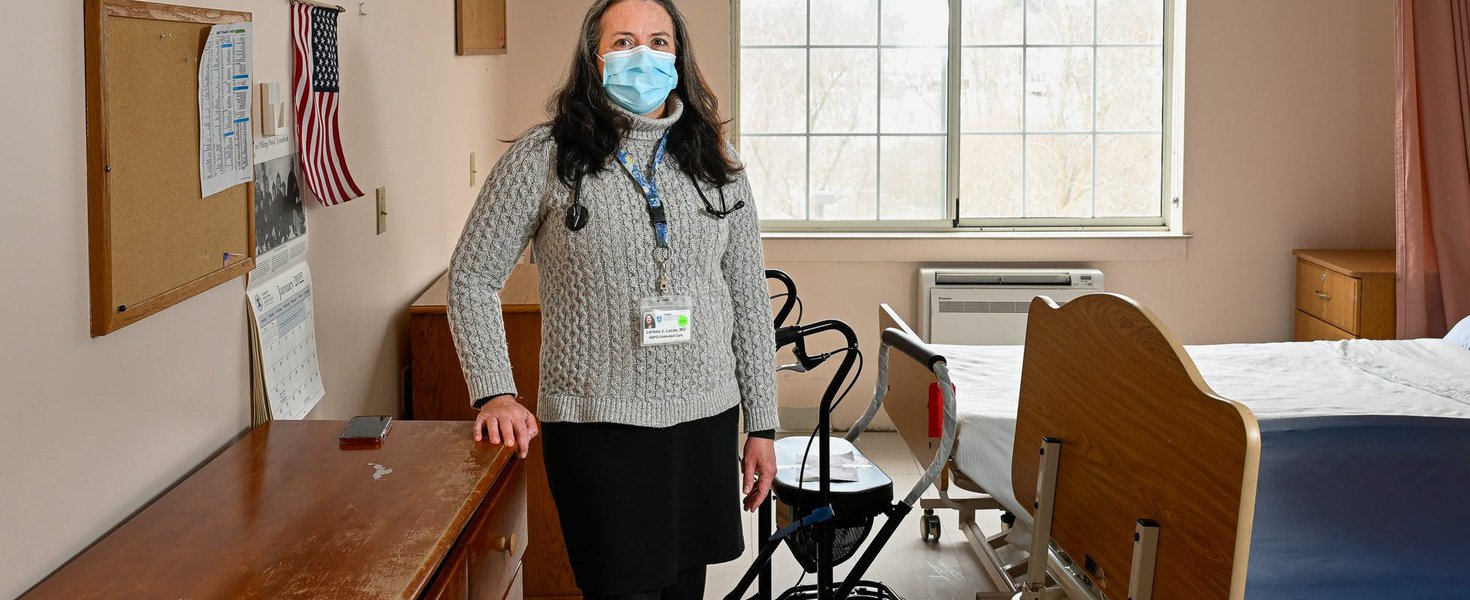Of kindergarteners entering school in Rhode Island this fall, nearly seven percent have tested positive for blood lead levels sufficient to trigger a public health response, according to data collected by the Rhode Island Department of Health (DOH).
In the City of Providence, that estimate is closer to 10 percent.
These data put Rhode Island at twice the national average for rates of lead poisoning, but both officials at the DOH and advocates at community organizations believe that the numbers are marked progress over previous testing levels. In 2001, an estimated 55 percent of new Rhode Island kindergartners tested positive for dangerous levels of blood lead.
Though there is no known safe level of lead in the blood, the CDC has established 5 micrograms per deciliter as the reference level for public health actions to be initiated.
Flint and Newark have made national headlines for delivering lead-poisoned water to their residents. However, in Rhode Island, state officials and local advocates have been quietly struggling to fight a different, yet similarly dangerous, source of lead poisoning for nearly half a century. Industrial byproducts and Rhode Island’s old and crumbling housing stock have created a physical environment in which the state’s children have been ingesting toxins for decades.
While the problem of lead poisoning is built into Rhode Island’s infrastructure, its lingering effects have been unevenly distributed, said Laura Brion, executive director of the Childhood Lead Action Project, a community organization formed in 1992 to eliminate lead poisoning in the state.
“The lead problem is one of both environmental contamination and social injustice,” Brion said. “It’s not just the fact that lead is surrounding us in paint, in soil, in dust, in water - it’s also the ways that different people are limited in how they interact with that environment.”
Despite ongoing attempts at lead mitigation, hundreds of children in Rhode Island remain at risk of being lead poisoned each year.
In the early 2000s, the state passed a progressive lead mitigation legislation law. At the same time, then-Attorney General Sheldon Whitehouse was working on his storied lawsuit, the first of its kind in the United States, against paint manufacturers who knew the lead they were using in consumer products was toxic. And, in 2004, the state Department of Health (DOH) announced a plan to eliminate childhood lead poisoning altogether by 2010. That target date has since come and gone, and elimination remains an aspiration.
“I’m both proud and slightly frustrated by the fact that we’re considered pretty far ahead of the game nationwide,” Brion said of Rhode Island’s attempts at mitigation. “On the one hand, we have some great laws in place that are making a difference. Our lead poisoning levels have plummeted in Rhode Island over the past couple of decades. But they’re still at totally unacceptable levels. Hundreds of children are poisoned for the first time every year. The downward trend makes me happy. The fact that it isn’t at zero infuriates me.”
Is Rhode Island the story of a successful campaign against childhood lead poisoning? Or, as advocates say, does the long history of attempts to solve a preventable problem suggest a lack of funding and political will to protect the state’s most marginalized children?
The plan to eliminate childhood lead poisoning
On August 31, 2016, Julian Castro, then-Secretary of the Department of Housing and Urban Development (HUD) and current contender for the Democratic presidential nomination, visited Rhode Island to propose a significant change to public health policy: reduction of the blood lead level required to trigger state action from 20 micrograms per deciliter to five.
At the time residents in Flint, Michigan were filing lawsuits against their government for poisoning the city’s water supply, but, as the Associated Press reported, Castro decided to make the announcement in Rhode Island due to “the prevalence of lead paint-based contamination in the state’s old urban housing stock and a yearslong state effort to track and reduce childhood lead poisoning.”
The state had already been trying to address the issue for more than a decade. In July 2004, twelve years after the Childhood Lead Action Project was formed with the goal of eliminating lead poisoning in Rhode Island, the state’s DOH made lead poisoning elimination one of its own goals and published “Rhode Island’s Plan to Eliminate Childhood Lead Poisoning by 2010.”
“Childhood lead poisoning has been the most pervasive environmental health problem facing Rhode Island’s children for many decades,” the plan began. “Fortunately, childhood lead poisoning is also one of the most preventable pediatric health problems today.”
Between the publication of the report in 2004 and 2010, the date planned for elimination, the prevalence of lead poisoning in children under the age of six decreased from 8,558 to 2,638 children. While the decrease marked a success for the DOH, nearly 10 percent of children screened for lead were still considered to be poisoned on the day planned for elimination.
The 2004 plan had a number of key features, some of which are still in effect today. First, the plan made it very clear that the goal was elimination.
Second, the plan distinguished between primary and secondary prevention. The primary prevention plan focused on education and outreach to families and doctors, including informing property owners and tenants about their rights and responsibilities under the 2002 Lead Hazard Mitigation Law.
A document from the DOH website dated July 2008, four years after the plan to eliminate lead poisoning was published, evaluated the success of primary prevention efforts. The “program resources” part of the evaluation suggests that challenges had arisen in outreach efforts:
Regardless of funding constraints, many aspects of primary prevention seemed to have been successful:
Other areas, however, were not:
The secondary prevention plan boasted that Rhode Island had the highest screening rate in the nation for children under the age of six, and focused on case management services, including lead inspections for homes where “significantly poisoned” children resided.
The plan also pointed to the launch of the Lead Elimination Surveillance System (LESS) a new data management system that would allow the state to “monitor lead screening and environmental data and therefore to evaluate the progress in eliminating childhood lead poisoning.”
While the goal of eliminating lead poisoning by 2010 is long overdue, data produced by LESS points to improvement. The percentage of lead-poisoned children entering kindergarten in Rhode Island fell from nearly 55 percent in 2001 to 6.8 percent this fall.
However, the DOH declined to provide data on the number of children with blood lead levels below five micrograms per deciliter but above zero, citing a privacy exemption, even though researchers have found that there is no blood lead level above zero that comes without impacts on cognitive function.
Progress but a paucity of resources
“There are significant socioeconomic and environmental determinants of health that drive health disparities and also that contribute to elevated blood lead levels among children in some communities in particular,” Joseph Wendelken, spokesperson for the DOH said, when asked why the goals outlined in the plan were not met. “Our work across the department is really focused on addressing a lot of those socioeconomic and environmental determinants of health to improve health outcomes when it comes to childhood lead poisoning and many other health issues.”
While Brion agrees that focusing on those communities that still face high levels of lead poisoning is important, she provided an alternative explanation for the problem’s uneven impacts.
“When the state was bold enough to say that was something they believed could be done in a certain time period and set goals and then failed to meet them, I think that it’s patently obvious here that environmental racism is a huge component of that.”
Officials in the DOH have good intentions, said Brion, but lack the resources to carry out what they know needs to be done.
There is neither the political will nor the funding necessary in the state legislature to solve the problem, advocates say.
“It’s really easy to get distracted by the idea that there’s going to be some new technological advance that will solve this for us, and that there just needs to be more research or more ideas,” Brion said. “I would love to see that happen, but for the most part, most lead poisoning cases in Rhode Island could be prevented using methods we’ve known about for decades. It’s just a matter of building the political will and raising the money to invest in the communities that need it the most.”
Margarita Robledo Guedes, the outcome broker for the Green and Healthy Homes Initiative (GHHI) in Rhode Island and a representative on the state’s Housing Resources Commission (HRC), also pointed to the fact that despite progress towards elimination, some children have been left behind, similarly citing funding and political will as key barriers.
“It’s still an issue, and it shouldn’t be. Children shouldn’t be exposed to this and it’s totally preventable,” Robledo said. She has been working on lead hazard mitigation in Rhode Island since 2002 and pointed to the struggle to access funding for mitigation and enforcement efforts as a barrier to elimination.
“Most of it has to be funding and educating policymakers about this issue.” Robledo said. “One of the things I do on a constant basis with the HRC and commissioners is send them information about lead.”
Robledo’s persistence has brought reforms. This spring, jurisdiction over enforcing the Lead Hazard Mitigation Law was transferred from the HRC to the DOH, a change that Robledo had been advocating for over the past few years. “We hope through this project one agency is accountable, one agency is responsible,” she said.
The DOH will be focused on ensuring that units where children have been previously lead poisoned get certified as lead safe.
“The goal is that every rental property have a certificate showing that a visual lead inspection has been done,” said Mike Simoli, an administrator at the Center for Healthy Homes and Environment within the DOH.
The same goals
“There are still pockets of children that are significantly lead poisoned in particular neighborhoods,” said Elizabeth Bryant, the executive director of Rhode Island Kids Count, a children’s policy organization. These “particular neighborhoods” are primarily located in the state’s poor, urban areas where there is a “lack of access to safe and affordable housing” or where residents “don’t want to complain about chipping lead paint for fear of getting evicted,” said Bryant.
The Childhood Lead Action Project is taking a similar approach, said Brion. “We are looking at the neighborhoods where lead poisoning rates are the highest, which is also the poorest neighborhoods and the neighborhoods where there is the greatest percentage of people of color.”
For these neighborhoods, the progress of enforcement and mitigation is less visible.
Although the DOH no longer has a plan or timeline in place for eliminating childhood lead poisoning, advocates have made it clear that elimination is the goal. This requires ongoing work. For one, Robledo said, “If you have a decrease in the number of lead poisoned children for a period of time, it may increase again if the housing stock is not regulated.”
In addition, although lead contaminants in soil, dust, and paint are the biggest sources of lead toxins in Rhode Island, state residents are not immune from the challenges of crumbling water infrastructure and a government that is unwilling to invest in large-scale repairs. Sixty percent of Rhode Island residents get their drinking water from the Providence water system, which has exceeded the Environmental Protection Agency (EPA) actionable levels for lead levels 10 times in the past decade and is one of the nation’s largest to violate EPA standards.
As lead poisoning continues to threaten Rhode Islanders nearly a decade after the DOH planned for its elimination, state officials say they will be persistent. “The ultimate goals are always the same, too,” Simoli said. “Decrease poisoning and increase screening.”




